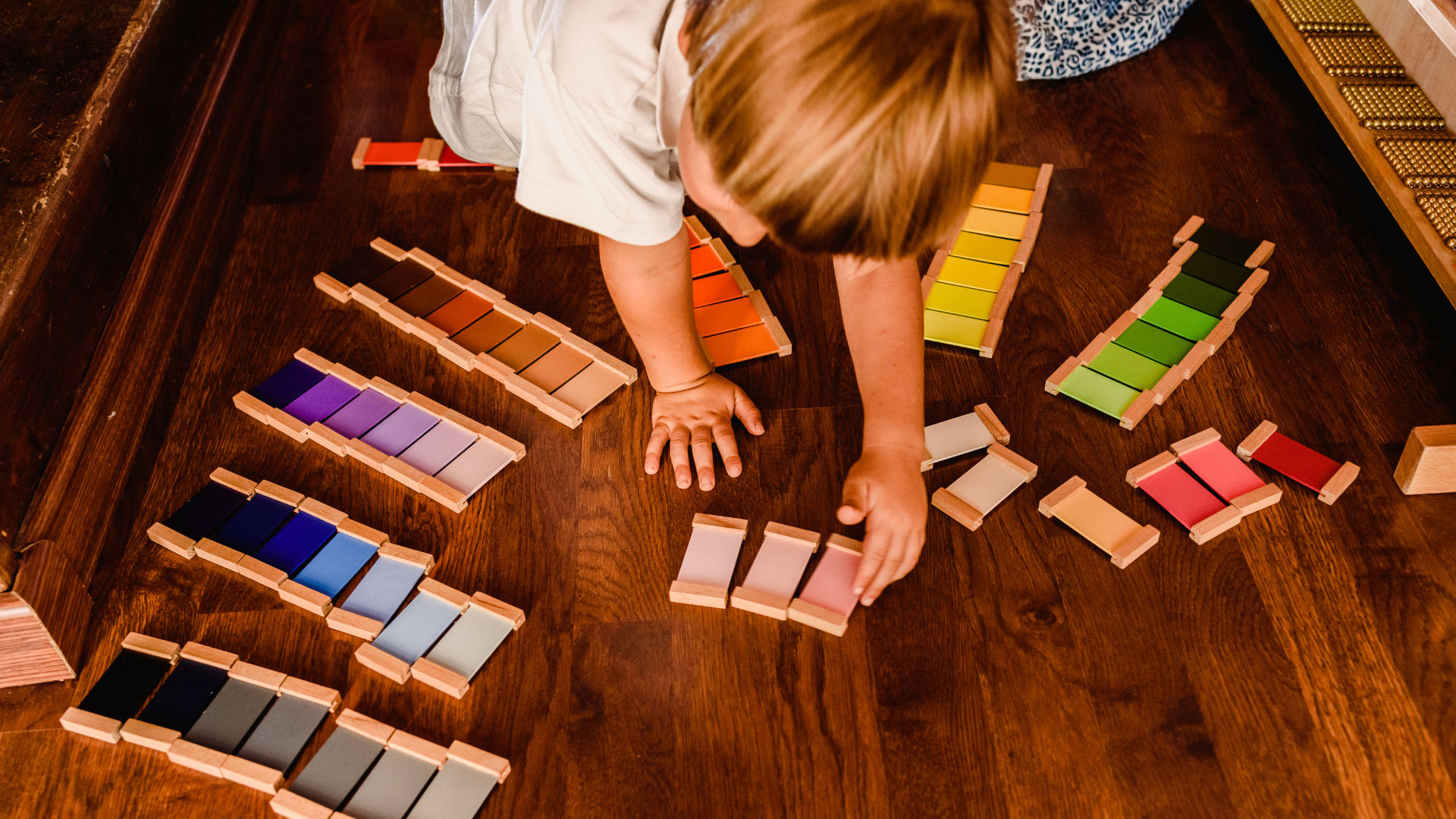
What happens when your toddler plays with Montessori toys?
Apr 25 , 2022
First, what makes a Montessori Toys?
Montessori toys are not complicated. Not too many colors, drawings, noises, and so on. A puzzle with a simple circle helps young children learn about shapes, colors, and the action of putting the circle in and out of the support. No sound, no pig face on the ring, no bright light when putting the circle back. The idea is that children need to focus on the basic, essential thing without unnecessary distractions. Montessori toys are reality-inspired. They are in a direct relationship with the world around children.
The environment in direct relation with Montessori toys!
Before creating their own imaginary world, kids need to learn from the environment to have a strong, accurate, and secure relationship with it. Bears live in the forest. They don’t talk, ride a bicycle and eat pies. Montessori toys are made from simple, natural materials to offer a proper experience to kids, inspired by real life. Toys made of different wood textures and metal with their own heavyweight and smooth surface provide an authentic experience. The plastic is all the same, with no unique texture, or weight, just plastic. Montessori toys invite children to action, explore, and put their minds into play. They’re not just spectators to a noisy, bright train. Montessori toys need to be handled.
Why nature-inspired toys?
Montessori toys are nature-inspired, simple, have real consequences, are made of natural materials, require children to participate, make decisions, have ideas, and promote independence and self-directed learning.
Children are naturally curious and creative about the world around them. The Montessori approach just offers the supplies necessary to discover and learn through play about their environment. This can happen when playing outside, in nature, or inside with the right Montessori toys that encourage open-ended play.
What to check when choosing a Montessori toy?
Guidelines when selecting toys not to overstimulate your little one.
Realistic toys! It’s important that the toys you choose to look realistic and accurate. If it’s an animal, it must be as precise as possible visually.
Hands-on toys! Look for toys that kids need to learn, build, manipulate, and have cause-and-effect so they can understand ideas, function, and processes, not be a passive interaction.
Simple toys! We don’t want to overwhelm children with complicated toys. Usually, a toy should focus on ONE concept (shape, numbers, colors, textures, weight).
Why wooden toys?
Maria Montessori realized that toys made of wood are healthy, safe, natural, durable, and encourage creativity. Usually, wooden toys raise interest in children. Playing with toys that have natural elements like wood help focus and calms children more easily than plastic, noisy toys. Children play more with toys that inspire open-ended play. A single wooden toy usually has more uses, like the Wooden Busy Board.
Wooden toys don’t do much because the child has to do ALL the work, which means it gets more creative, learns about cause and effect, develops problem-solving skills and imaginative play.
Wooden toys help develop dexterity, hand-eye coordination, fine motor skills, and focus. Wooden blocks are great to inspire, let children get creative, and coordinate their hands to build and balance the elements, no magnets or connecting system being involved. It’s their first physics lesson.
Wooden toys last and are beautiful. These toys never “go out of fashion” and can be passed from generation to generation, being durable and safe for children of all ages.
Are Montessori toys better for your child?
Yes, they might be. Children who play with Montessori toys understand the world around them more accurately. It encourages creativity and imagination but limits fantasy. Montessori toys encourage practicing real-life activities, learning real-life skills, developing gross and fine motor skills, balance, hand-eye coordination, independence, creativity, problem-solving, and so much more.
